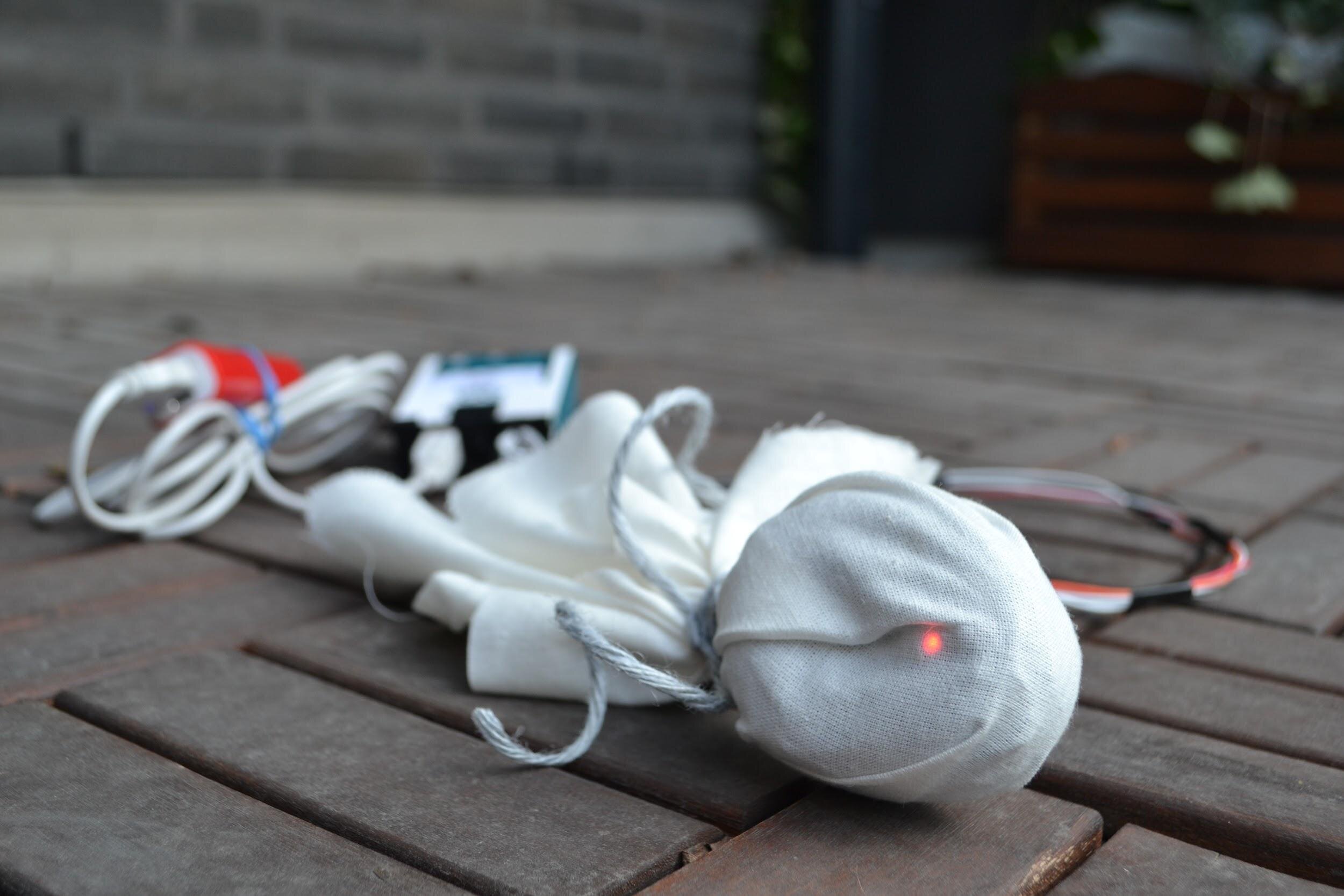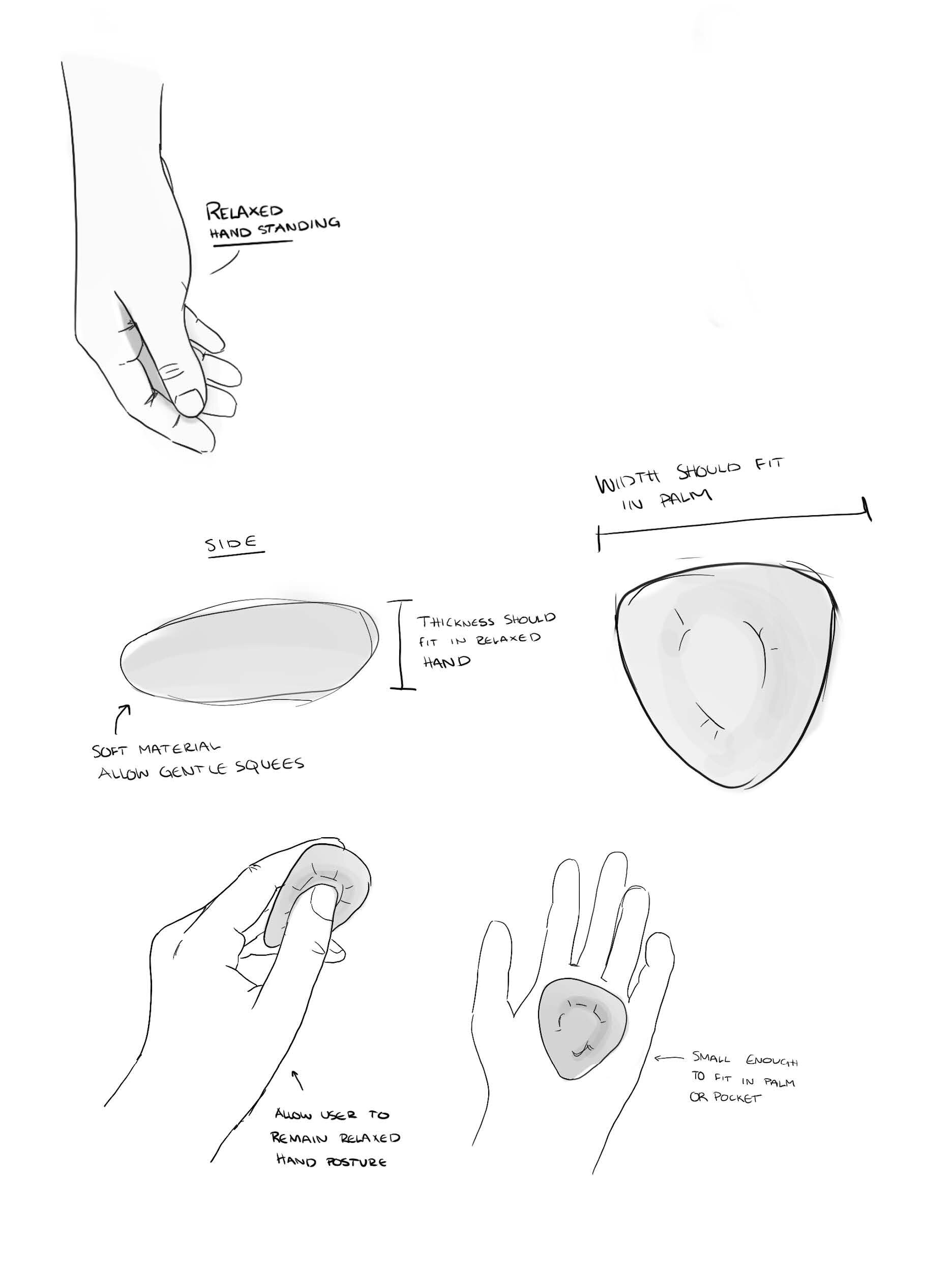
BrainBuddy
Tangible Interaction
Group project: Anna Jarebro, Kajsa Bjäräng, Viktoria Enderstein, Emmanuel Brorsson, and myself.
This project was aimed towards mental health, struggles of being stationary and supporting a healthier lifestyle habit through the act of enabling walking meditation with haptic feedback and tangible interaction.
This project was done through a period of 8 weeks, and included a combination of microcontrollers (arduino) and rapid prototyping using simple materials.
Challenges: The complexity of the programming, making the haptic feedback supportive rather than disruptive. Could have used more user evaluation and further iteration to optimize the user experience.
My role: I was a part of most aspects, but my strength in this project was the technical sketches and tangible prototyping.
Final prototype: Mindful walking afforded by haptic feedback and pace reduction
Evaluated within the team and contacts, to fine-adjust the functionality.
① The user starts BrainBuddy by turning it on using the switch button. In the beginning of the walk, the user simply presses on the BrainBuddy’s button according to the tempo of the walking pace.
③ When the pace is half the tempo compared to what it was from the beginning, the vibration keeps its pace which lets the user walk at the designated pace, possibly supporting walking meditation.
The final prototype.
② The haptic motor starts vibrating accordingly to the corresponding pace that was set using the button and then slowly increases the time interval between the vibration to help the user decrease their walking pace.
But how did we get to here? ↓
Initial sketches and low fidelity ideation/prototyping
Low fidelity prototyping was used in order to explore the form and feeling, with no functionality. These were evaluated with a focus group discussion, and the preferred shape were chosen.
Solution sketches
Solution sketches were made, and then reiterated by making them into more of a schematic over possible technology.
From sketches to tangible prototypes
The final prototype was the result of an artefact which was made through several iterations, focusing on different aspects of the design.
From the manifestation of the ergonomic base, the software, and the mechanical aspect with assembling, optimizing and soldering.












